It was a one of those weeks and I was glad to make it to the end. Friday was my day off, so I took the dog for a hike, dropped off the paintings for the ODFW Stamp Contest, and then crossed of a New Year’s Resolution (we won’t talk about that this has been my resolution for the last 3-4 years…)
Author’s note: The photos in this blog are taken by me, but the content of them is the sole copyright of the artist of the pieces shown. The museum expressly gives permission to all visitors to take pictures (flash off.)
The Hallie Ford Museum of Art
The reason I (finally) decided to check this off my list is that the Dale Chihuly exhibit is closing August 28 (the day of this post, one day after my visit).
Living in the Pacific Northwest, Chihuly is practically a household name. At the coast, glass blowers abound. But his work is lovely, if very commercial (let’s not be prejudiced against commercially successful artists…)
As you can see from the subtitle above, the exhibit was broken into three main sections. I didn’t care for his early work (the cylinders). I have seen the Macchia (his middle work) so many times that it barely registered. It’s lovely and let’s leave it there. The Venetians were fun, though not to my taste.
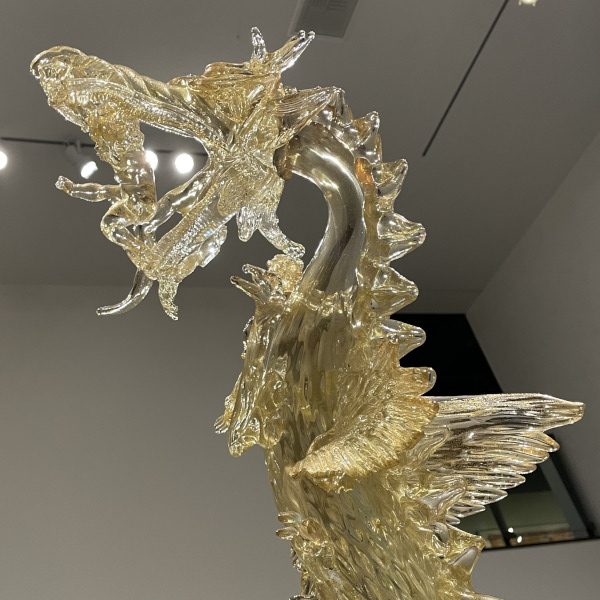
While I had seen pieces of work from his Macchia series many times, I was interested to find out what the word means on one of the explanatory signs.
In the summer of 1981, Dale Chihuly began an ongoing series of flamboyantly shaped and brilliantly colored vessels that he called Macchia. The work macchia comes from the Italian word for spotted or stained…
But what I REALLY loved was the displayed drawings.
It was fascinating to see another artist working through things. It made the actual glassworks more accessible for me.
I also thought that they blurred the line between abstract and representative art. This was an artist trying to work out what he wanted, but he was making it up out of thin air. And yet, each area of the paintings had interest. Looking at the small detail of one of the blooms (above), I felt like there was enough to keep someone inspired for years. Clearly, Chihuly felt the same.
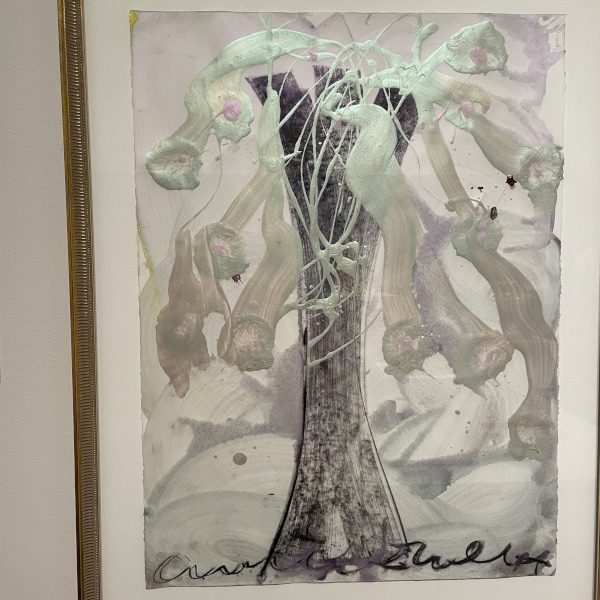
As with most museums, there were other exhibits going on.
Narrative
We are drawn to images that are recognizable and familiar: figures, objects, places, and even words. They are also narrative in nature, because they tell stories or imply associations. Meaning can be fluid. It begins with the artist, who constructs the narrative. However, interpretations are ultimately left to the viewer, whose experience of the work will be informed by their own knowledge and perceptions.
Point of View (items from the permanent collection)
point of view
1: a particular attitude or way of considering a matter
2: a position from which someone or something is observedIn this exhibition series, we invite members of the Willamette community to share their experience or interpretation of a work of art from the perspective of their area of expertise, study, or research.
Claudia Cave: Paper, Pencil, Paint
I have seen enough of Claudia Cave’s work to recognize her style. I was surprised to learn she was from the Portland area.
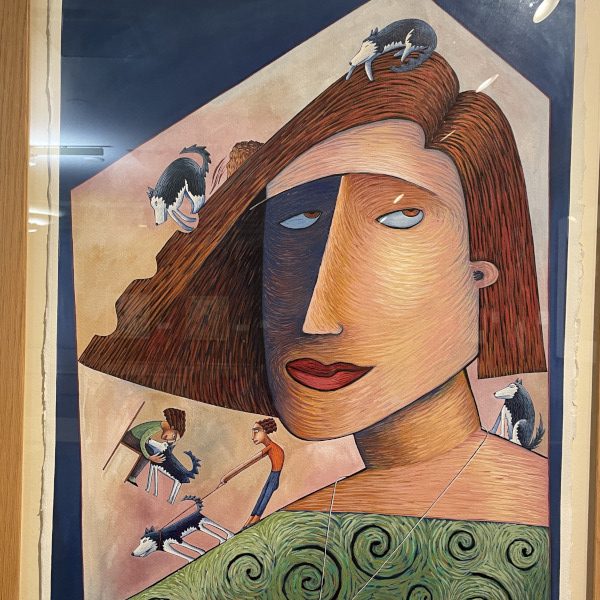
My favorite item was this piece, which is a single panel from a set called “The Strip Drawings”.

The strip drawings explore such themes as confrontation, metamorphosis (from congeniality to irrational anger), avoidance and escape, fear, upheaval, miscommunication.
I was really impressed at how she told this story.
Ancestral Dialogues: Conversations in Native American Art

This exhibition might have been my favorite. I am a big fan of Tlingit art and it was wonderful to see some of these traditional pieces interspersed with Willamette Valley weaving (apparently, what this area was best at) as well as contemporary art.
The first two photos are by Tlingit artists. The basket is of Klickitat style, which is the area I live; those who have ready Beverly Cleary may remember Klickitat Street. The figurine had a mention of “formline” which is the term to describe what I found most appealing about the Tlingit style. The bottom two pieces are my contemporary artists. “Ice” reminds me of all the windmills along the Columbia Gorge. “Camas Series #13” invokes horses (one of my favorite subjects), but also confuses me with the use of blocks of color. An intriguing work.
On the way out, I chatted with the front desk receptionist (yes, all wearing masks, thank you). I learned the Native American gallery changes frequently. I’m going to try to go back. So, one resolution crossed off, and another takes its place!
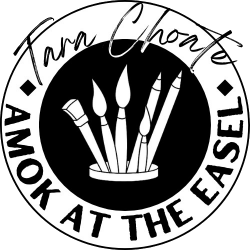
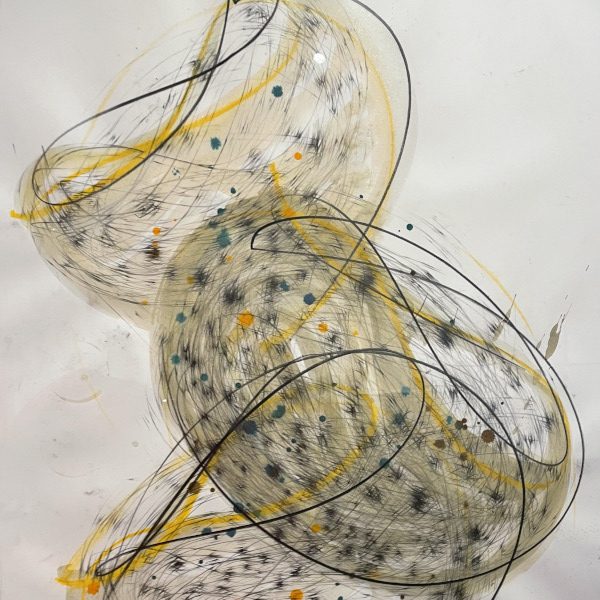
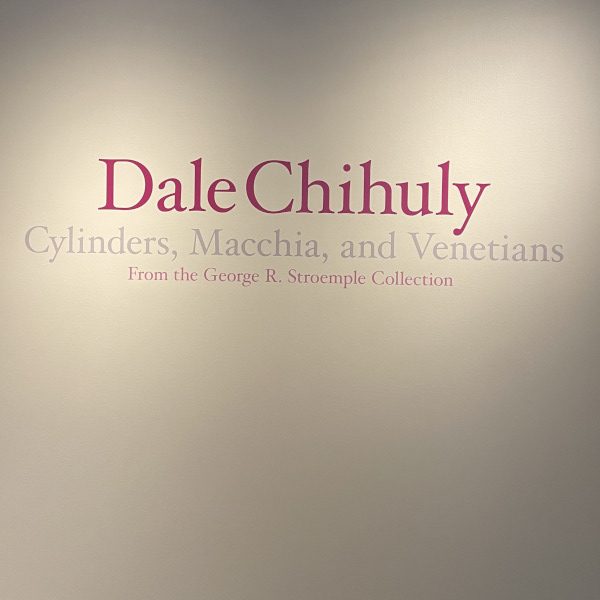
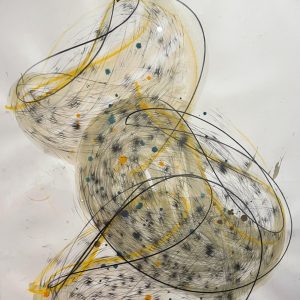
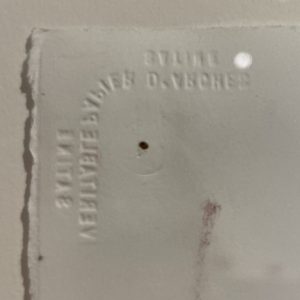
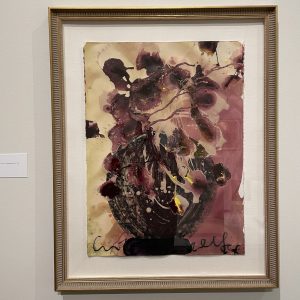
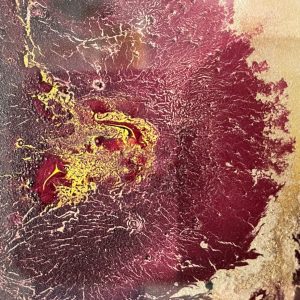
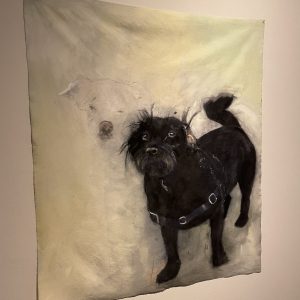
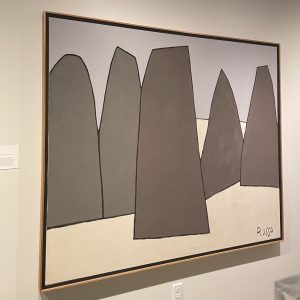

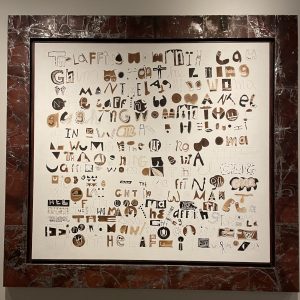
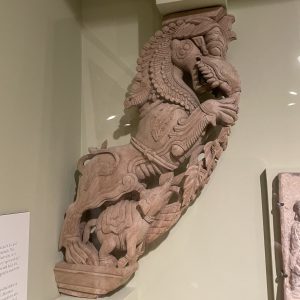
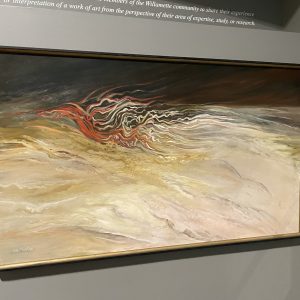
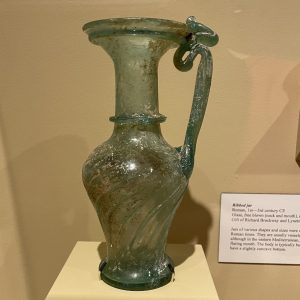
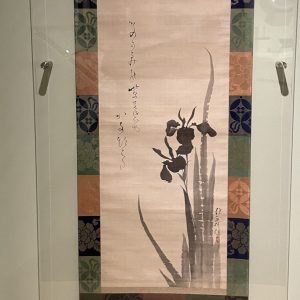





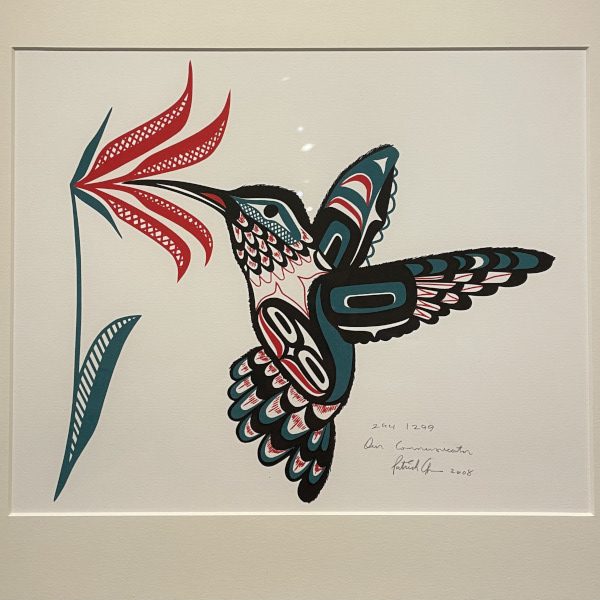
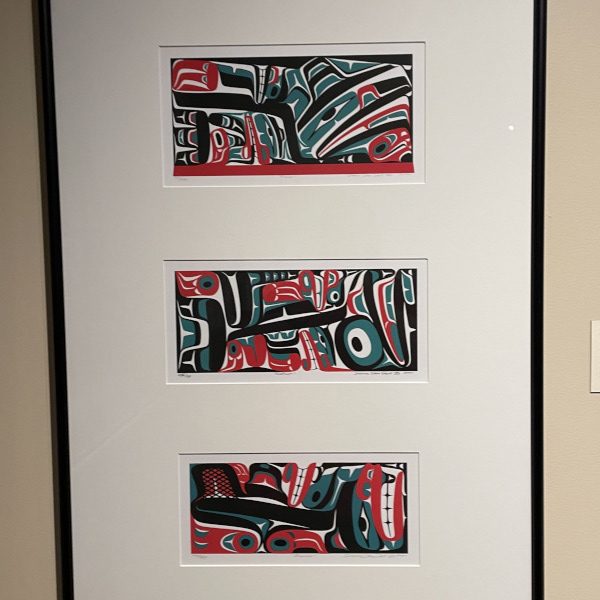
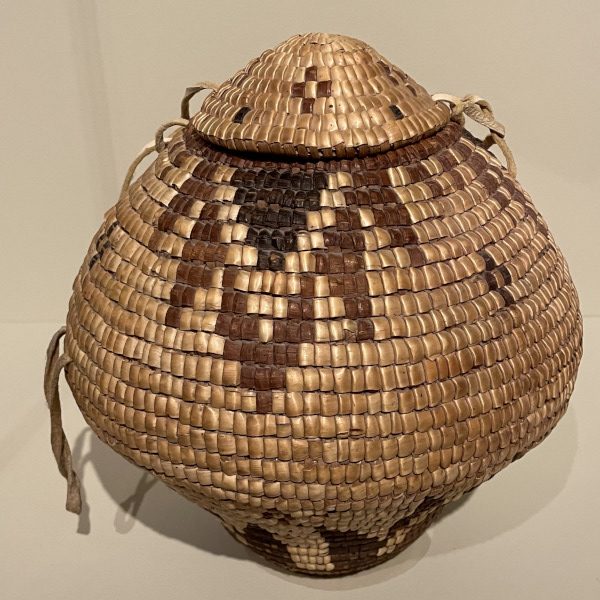
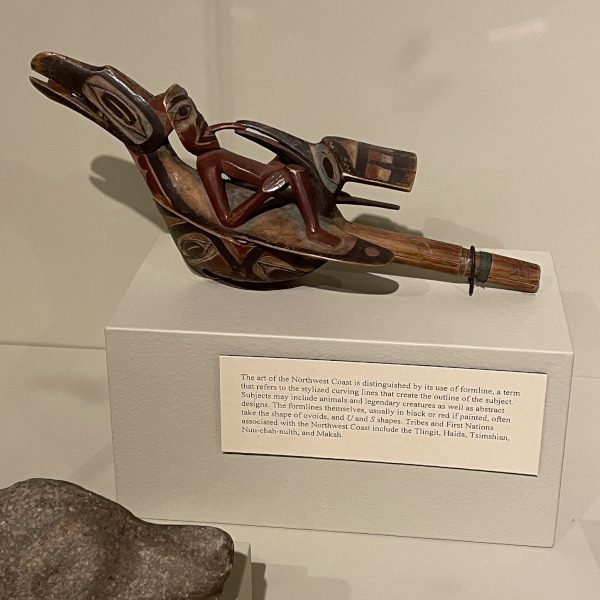
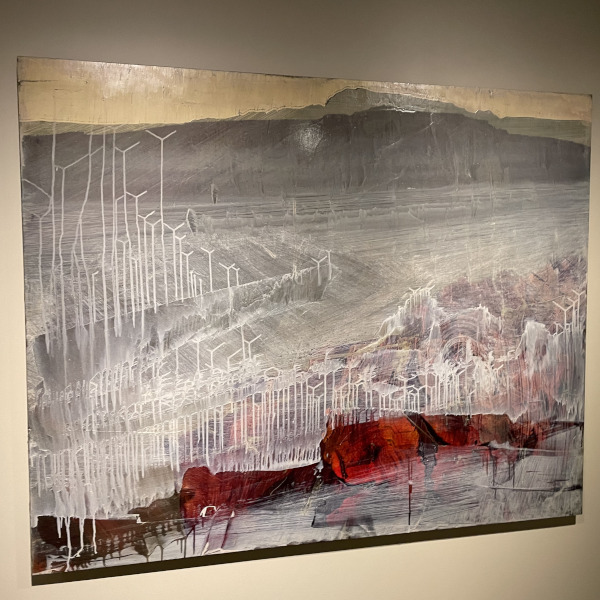
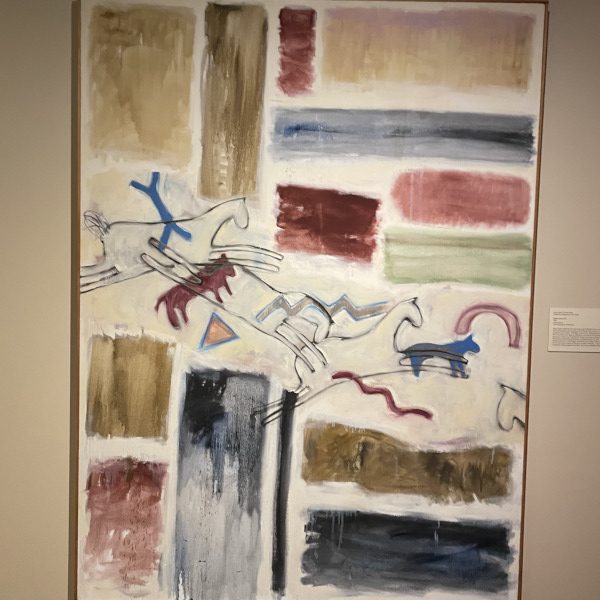
Tara, this was so interesting to see! Thank you! Claudia Cave was an art student at Western Oregon State (Monmouth) and so was Kent Sumner where they both took art classes and met and later married. They both were from Salem. Kent enjoyed pottery and clay work and was the manager for Oregon Clay Company after we sold it to John Gall. We remember their joint efforts when they mailed small art pieces around the nation and the Christmas cards they used to send. (Wish I still had some of those—but “ha!”—who knows, maybe I still do have them packed away in some unopened box!!) Your Dad would have remembered Kent.
Also, your Dad may have remembered Rick Bartow who earlier took art classes and who spent time with Larry Stobie (who taught at WOSU)….because Rick lived in Newport. Rick was fiercely independent, a Vietnam vet (which figured strongly in his life and work) as did his native heritage and the struggles within the history. Two of his sculptures are displayed at the National Mall (commissioned by the Smithsonian). The Newport Visual Arts Center has held shows of his work; his work has been shown nationally and internationally as well.